I am trying to fit experimental data
with a function of the form:
A * np.sin(w*t + p) * np.exp(-g*t) + c
However, the fitted curve (the line in the following image) is not accurate:
If I leave out the exponential decay part, it works and I get a sinus function that is not decaying:
The function that I use is from this thread:
def fit_sin(tt, yy):
'''Fit sin to the input time sequence, and return fitting parameters "amp", "omega", "phase", "offset", "freq", "period" and "fitfunc"'''
tt = np.array(tt)
yy = np.array(yy)
ff = np.fft.fftfreq(len(tt), (tt[1]-tt[0])) # assume uniform spacing
Fyy = abs(np.fft.fft(yy))
guess_freq = abs(ff[np.argmax(Fyy[1:])+1]) # excluding the zero frequency "peak", which is related to offset
guess_amp = np.std(yy) * 2.**0.5
guess_offset = np.mean(yy)
guess_phase = 0.
guess_damping = 0.5
guess = np.array([guess_amp, 2.*np.pi*guess_freq, guess_phase, guess_offset, guess_damping])
def sinfunc(t, A, w, p, g, c): return A * np.sin(w*t + p) * np.exp(-g*t) + c
popt, pcov = scipy.optimize.curve_fit(sinfunc, tt, yy, p0=guess)
A, w, p, g, c = popt
f = w/(2.*np.pi)
fitfunc = lambda t: A * np.sin(w*t + p) * np.exp(-g*t) + c
return {"amp": A, "omega": w, "phase": p, "offset": c, "damping": g, "freq": f, "period": 1./f, "fitfunc": fitfunc, "maxcov": np.max(pcov), "rawres": (guess,popt,pcov)}
res = fit_sin(x, y)
x_fit = np.linspace(np.min(x), np.max(x), len(x))
plt.plot(x, y, label='Data', linewidth=line_width)
plt.plot(x_fit, res["fitfunc"](x_fit), label='Fit Curve', linewidth=line_width)
plt.show()
I am not sure if I implemented the code incorrectly or if the function is not able to describe my data correctly. I appreciate your help!
You can load the txt file from here:
and manipulate the data like this to compare it with the post:
file = 'A2320_Data.txt'
column = 17
data = np.loadtxt(file, float)
start = 270
end = 36000
time_scale = 3600
x = []
y = []
for i in range(len(data)):
if start < data[i][0] < end:
x.append(data[i][0]/time_scale)
y.append(data[i][column])
x = np.array(x)
y = np.array(y)
plt.plot(x, y, label='Pyro Oscillations', linewidth=line_width)




